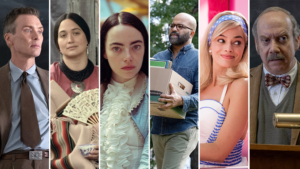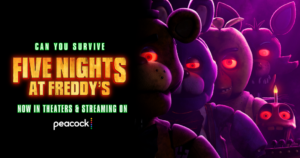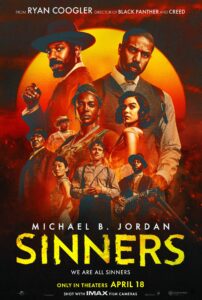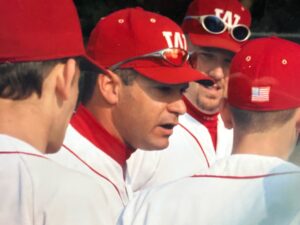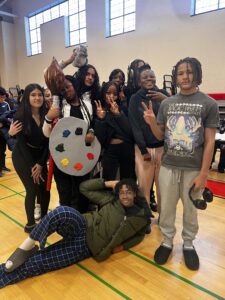‘Annette’ Review: Having Sympathy for the Abyss
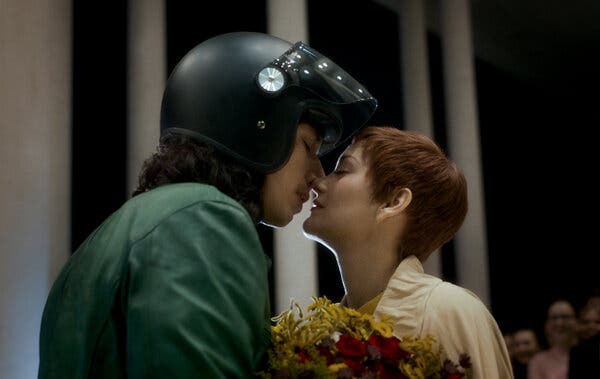
Photo Courtesy of NEW YORK TIMES
★★★★★
Waltzing to the Heart of Musicality
Who would’ve assumed that a film blending a dramatized narrative with a musical genre — from a director who’s never attempted a fully melodic feature — would arise as one of the most tonally staggering films of the year? Leos Carax is a filmmaker who’s enlivened a meshing ground between euphonious and melancholy textures to an incomparable degree. “Annette” capitalizes and — concurrently — choreographs a deviant whimsy of unbridled magic. Mr. Carax enchants the simplicity of the banal, “star-crossed lovers” tale with visuals that conceptualize naturalism in an entrancing scuffle with premodern fauvism. In essence, “Annette” appears as an eclectic genre piece that grows more and more bombastic as the narrative progresses.
The structure of the plot emanates from the source material by Russell and Ron Mael (otherwise known by their musical persona “Sparks”). “Annette” details the conflicting uphill battle with Henry McHenry (portrayed by Adam Driver) — a stand-up comedian with a hint of musical ambitions as he shuffles through the hour-to-hour affairs of his elegant, sequestered lifestyle. In addition — his mannerisms cause him to reveal a narcissistically cavalier demeanor as well as an aggressive approach to public confrontation in which Henry finds himself clawing through the cobwebs of maligning streams-of-consciousness.
Conversely, Henry McHenry’s identity is complemented by the near disparate character of Ann Desfranoux (portrayed by Marion Cotillard) — Henry’s wife — who’s going through an up-and-coming surge to stardom. She incites her narrative purpose as a woman acting as a potion to quell the verbal toxicity that is displayed by Henry. Ann consistently loses her footing — as far as character hierarchies are concerned — but her hypnotic, soprano performances uplift the tonal divergence that, with the lack of her voice, would descend into unmitigated misery. Ann’s productions are set on stage as she acts in the form of a character wallowing with despondency and in search of love and harmony — a justifiably adventitious need considering the habits of her husband.
Thereafter, Leos Carax’s direction draws parallels to that of his previous projects as well as the work of other directors who have produced sumptuous musicals with poignant denouements. Primarily — “Annette” infuses the recurring ideology of “all the world acting as a stage hosting dramatic spectacles.” Jacques Demy’s “The Umbrellas of Cherbourg” (from 1964) encapsulates these similar essences of musicality and winding intonations while still maintaining lush — romantic undertones. Bob Fosse’s “All That Jazz” (from 1979) embargos a limitation of the stage housing the musical numbers as well as the provocative, melodramatic subtexts that carry the weight of Ralph Burn’s grandiose score. “Chicago” by Rob Marshall (from 2002) also feels like a diminuendo to the murky intangibles that “Annette” encompasses while still manifesting notions of crime and humanistic savagery.

Fundamentally, the visual lapses that linger between artifice and truthful expression elicit a similar perspective to that of David Lynch’s “Lost Highway” (from 1997). Mr. Lynch’s cinematic tendencies sulk in the categorization of ulterior motives and analogous personas — a thematic outlook that’s quite similar to what Leos Carax attempts to precipitate with his narratives. For instance, Adam Driver’s character of Henry McHenry alternates between actions of barbaric anger and vulgar comedy, an alluring relationship considering not one facade — to a prolonged degree — is perpetuated.
But the underlying tale of “Annette” is catalyzed by the imposition of motifs to act as inanimate indicators of a character’s presence. For Ann Desfranoux, she’s prevalently seen chewing on an apple (around two to three bites are visualized) — but the red tinge of the fruit is echoed in the color of her hair that shifts length from the wigs she wears as well as through the passage of time. In the case of Henry McHenry — he incessantly and fervently chews on a banana before each of his comedic performances. Prior to the point of his stage entry, he emphatically propels the butt of his banana onto the surface of an ashtray. The unashamed whimsicality of the fruit acting as oxymoronic — plot benchmarks reveals the subtle clarity of Russel and Ron Mael’s script.
As a resulting occurrence, “Annette” feels paradoxical, like a self-conscious fairytale lacking dragons and princesses and — instead — encasing a meditation on artistic creationism. The initial music number from the film’s chorus contains the words “so may we start,” undoubtedly an expository point, but the song’s purpose shies away from being commandeered by the will of the narrative and — truthfully — creates a blunt yet wondrous opening. And although the characters of Ann and Henry convey tirades pertaining to life and death — the manner in which Leos Carax so grimly displays the individuals speaking is what musters the undying intricacies of “Annette” and its tale.
A tantalizing continuity across the previous works of Mr. Carax is the usage of shades of green. While being a color that can embody and epitomize a plethora of tones, “Holy Motors” (Leos Carax’s preceding cinematic piece from 2012) and “Annette” seem to fashion green as a morbidly woeful pigment. A color that can edify normality as a rather loathsome being that suppresses the genuine hallmarks of the contemporary scene. Additionally — Mr. Carax applies green as a psychologically jaded presence that sucks the creative vision out of all those who revel in its existence. The color is present — most prominently — in the fluorescent grandeur of Henry and Ann’s pool at night. A location that is displayed as a pivotal component of Ann’s routine.
The cinematography of “Annette” is one of the prime facets that leads to the distinct cohesion of the film. Director of photography Caroline Champetier does an impressive job at utilizing tracking and establishing frames to present less of a foundation for the setting and more of a ground for the succeeding moods. The film also contains elongated frames that surround characters and engulf them in a circuital boundary placed by the camera. And most triumphantly — Nelly Quettier’s editing habitually blends two frames which allow for the confrontation of two characters to sustain a static positioning from the viewer’s perspective.
But the anticlimactic — and infringing on campy — tunes from Russell and Ron Mael are what make the splicing between sung dialogue and the spoken word predominantly coordinate. The songs are purposefully matched with grotesque visuals that controvert the theme of the film. One of the more highlighted tunes of the film is entitled “We Love Each Other So Much”; concomitant to the duet between Ann and Henry within the musical number — there are premeditatively gratuitous visuals that do concur with the moral of the song but strike a rather opposing elucidation.
And the final twenty minutes of “Annette” would call for the divulging of critical details. As a result — it can only be said as a hallowed point that can rarely be reached in a filmmaker’s career. It’s the point in which the metaphysical and tangible value behind a narrative has reached a profound zenith where everything mingles to an exemplary level of storytelling prowess. It’s the point at which all the eloquent subtleties have reached a state of unimpeded amazement.
As previously indicated, “Annette” disseminates the utter proficiency of the collaboration between Leos Carax and “Sparks.” It delineates the naturalistic substructure from its sordid nucleus impeccably. And most remarkably, it shows how much the musical genre has shape-shifted over the previous decades, and the preposition of molding dramatics and musicality into a single narrative creates a dynamic plateau — a platform obliging to house a boundless range of plot paradigms.
_________________________________________
Viewed opening night, August 6, 2021, at the “IFC Center” premiere in New York City.

